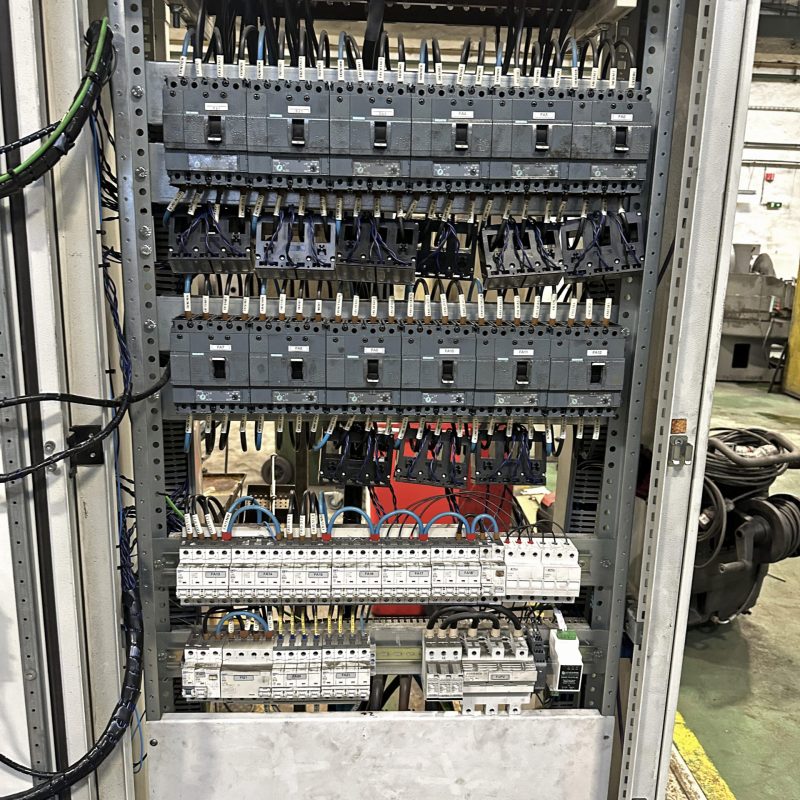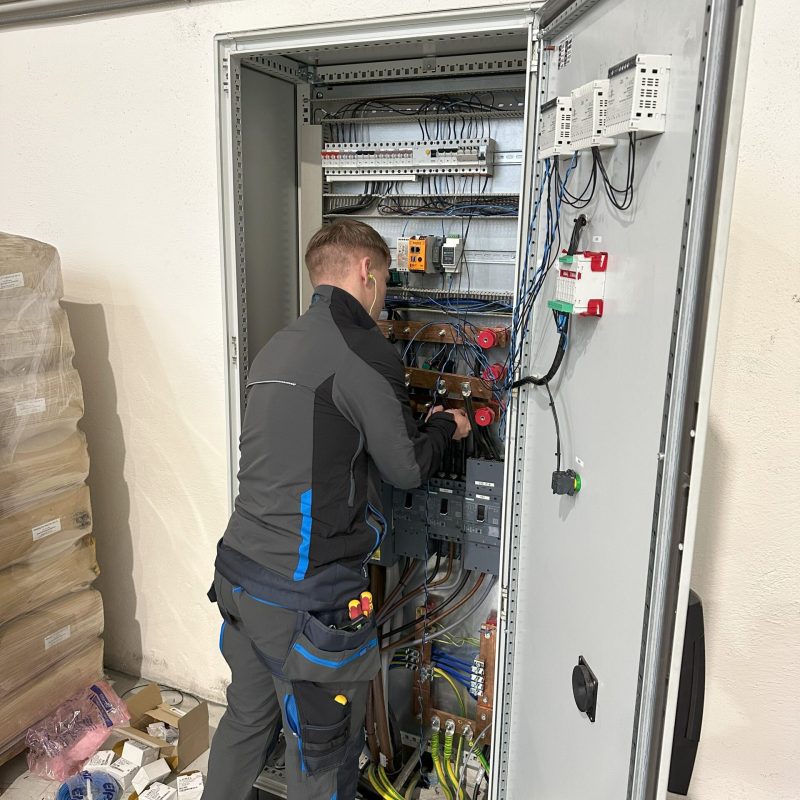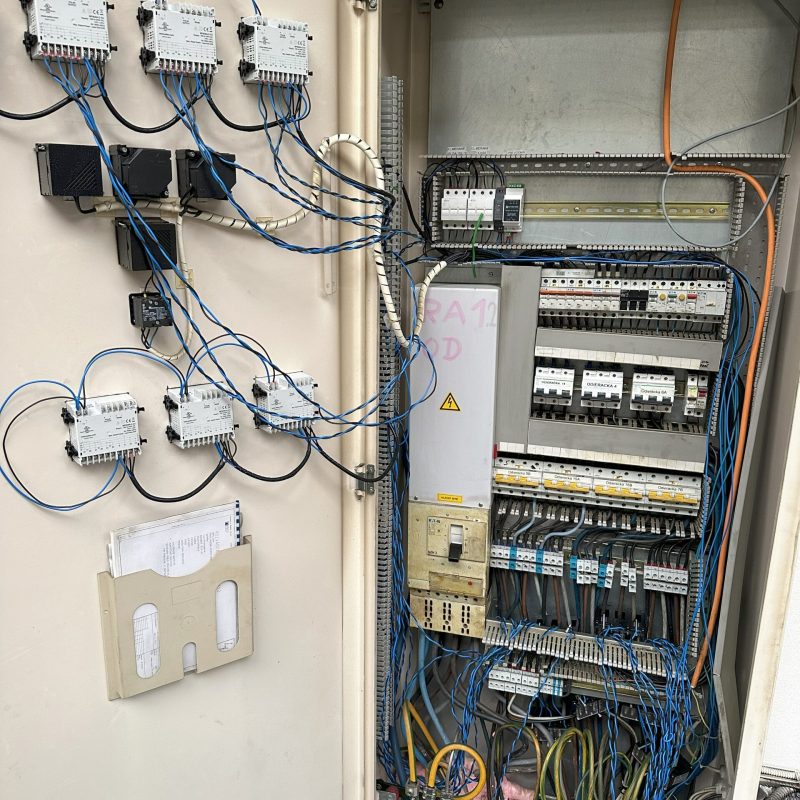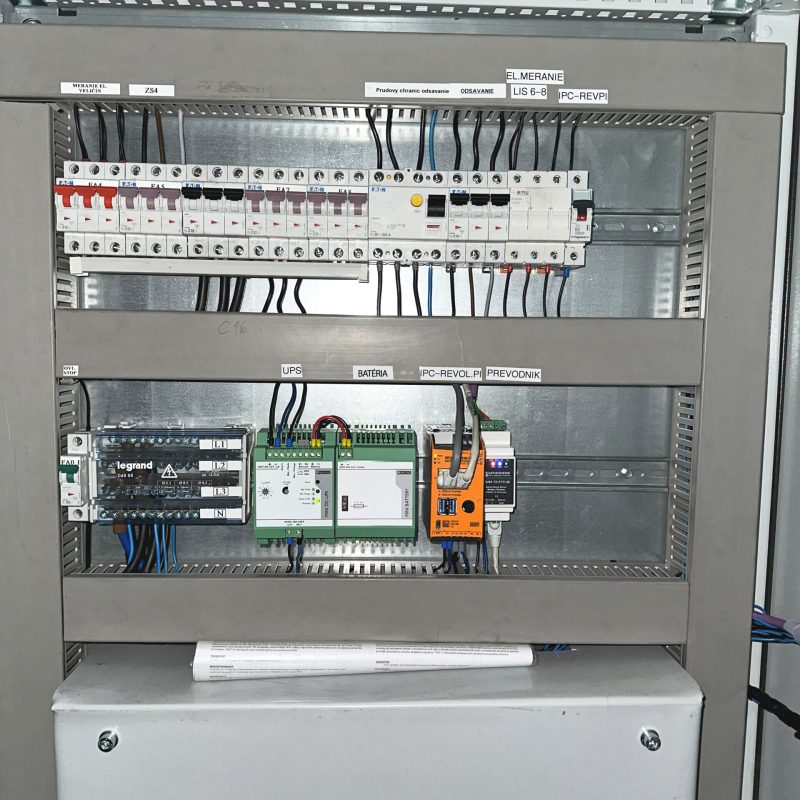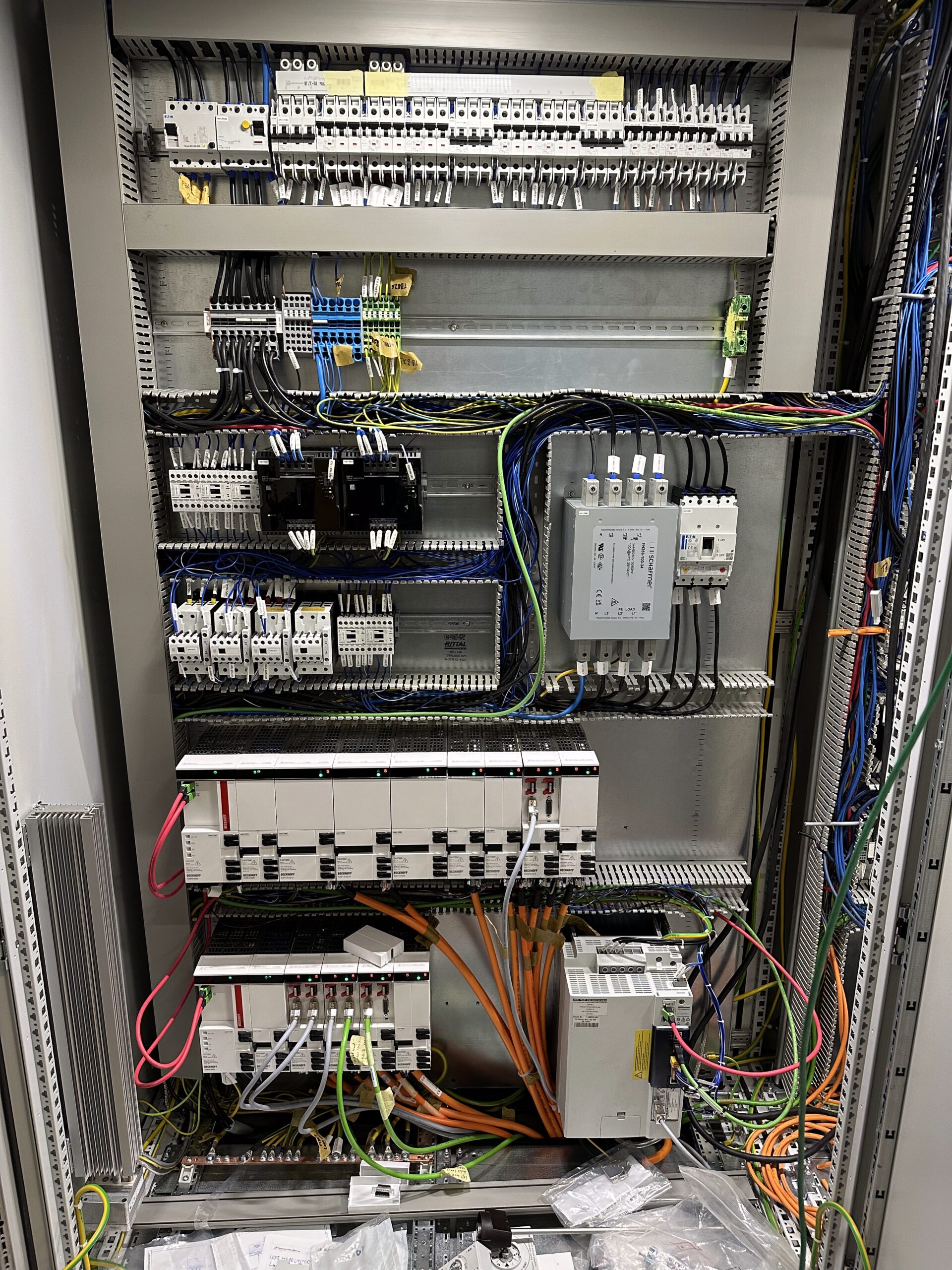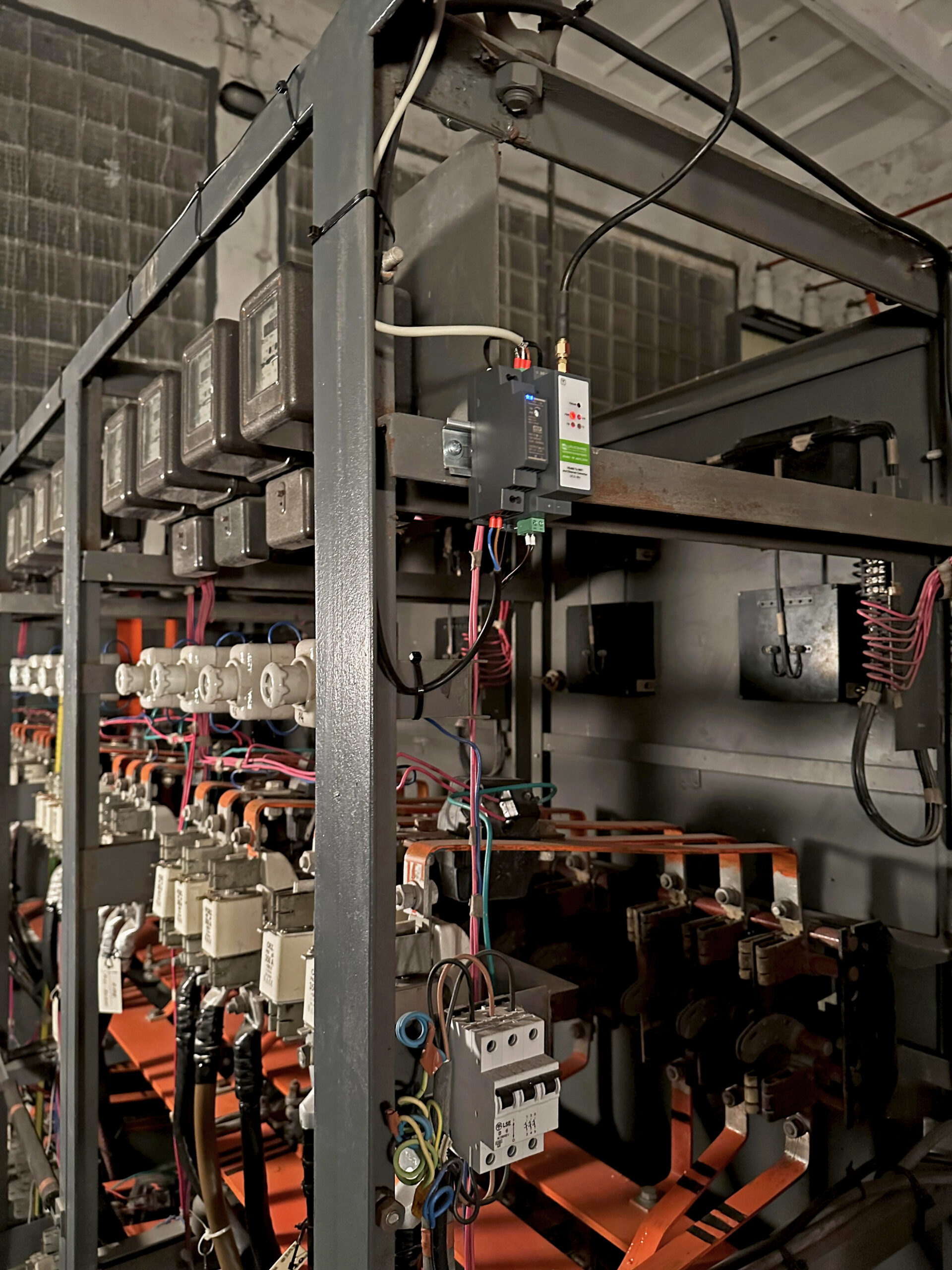Summary of the project
The project focused on the implementation of sub-metering in an engineering factory specialised in the production of high-precision products, in order to obtain a detailed overview of electricity consumption. In the first phase, we focused on the technologies that were the most important in terms of energy consumption and technical relevance.
Measurement was carried out by networking the measuring devices using the Modbus RTU protocol, and we created a hybrid network topology: in each switchboard there was a converter from Modbus RTU to TCP, to which the individual meters were connected in a line topology. All converters were then centrally connected to the respective switch in a separate subnetwork (VLAN) to ensure reliable and isolated communication.
Number of measured points
Number of installed devices
Implementation
As an industrial “edge” solution, we used a Revolution Pi device to collect and aggregate data, and for this purpose, a special VLAN with an Internet connection was created, which makes remote management possible. We equipped the Revolution Pi with a battery back-up power supply (UPS) to eliminate the risk of unwanted measurement failure in the event of a power interruption.
In cooperation with our partner company, which covered the project, a visualization was developed that displayed the measured data in real time, analyzed the consumption and alarmed dangerous conditions. At the same time, the client integrated a system to recognise the status of individual machines to monitor whether they were in full production, downtime or idle, giving a comprehensive view of production capacity utilisation.
Results
During the installation, we installed 79 measuring devices, with the total number of installed electrical elements reaching 109, which ensured detailed monitoring of all relevant parts of the production. The project has resulted in a reliable and detailed system that helps to reduce energy costs, optimise production processes and contribute to better maintenance management.
Two further phases are currently being prepared, in which it is planned to extend the measurement to other technologies and to add other media (water and gas) to the system, together with ambient temperature measurement, to give an even more comprehensive overview of the operating conditions in the plant.
